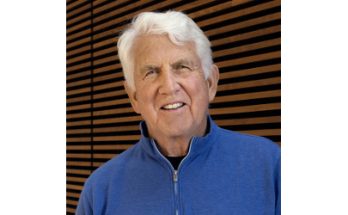A New History of Modern Computing
By Thomas Haigh and Paul E. Ceruzzi
Published by The MIT Press, September, 2021
ISBN-13: 978-0262542906
“How the computer became universal.”
Over the past fifty years, the computer has been transformed from a hulking scientific supertool and data processing workhorse, remote from the experiences of ordinary people, to a diverse family of devices that billions rely on to play games, shop, stream music and movies, communicate, and count their steps. In A New History of Modern Computing, Thomas Haigh and Paul Ceruzzi trace these changes. A comprehensive reimagining of Ceruzzi’s A History of Modern Computing, this new volume uses each chapter to recount one such transformation, describing how a particular community of users and producers remade the computer into something new.
Haigh and Ceruzzi ground their accounts of these computing revolutions in the longer and deeper history of computing technology. They begin with the story of the 1945 ENIAC computer, which introduced the vocabulary of “programs” and “programming,” and proceed through email, pocket calculators, personal computers, the World Wide Web, videogames, smart phones, and our current world of computers everywhere—in phones, cars, appliances, watches, and more. Finally, they consider the Tesla Model S as an object that simultaneously embodies many strands of computing.
Table of Contents:
Acknowledgments ix
BECOMING UNIVERSAL: INTRODUCING A NEW HISTORY OF COMPUTING 1
1 INVENTING THE COMPUTER 9
2 THE COMPUTER BECOMES A SCIENTIFIC SUPERTOOL 29
3 THE COMPUTER BECOMES A DATA PROCESSING DEVICE 55
4 THE COMPUTER BECOMES A REAL-TIME
CONTROL SYSTEM 83
5 THE COMPUTER BECOMES AN INTERACTIVE TOOL 109
6 THE COMPUTER BECOMES A COMMUNICATIONS PLATFORM 139
7 THE COMPUTER BECOMES A PERSONAL PLAYTHING 167
8 THE COMPUTER BECOMES OFFICE EQUIPMENT 207
9 THE COMPUTER BECOMES A GRAPHICAL TOOL 243
10 THE PC BECOMES A MINICOMPUTER 263
11 THE COMPUTER BECOMES A UNIVERSAL MEDIA DEVICE 293
12 THE COMPUTER BECOMES A PUBLISHING PLATFORM 329
13 THE COMPUTER BECOMES A NETWORK 359
14 THE COMPUTER IS EVERYWHERE AND NOWHERE 385
15 EPILOGUE: A TESLA IN THE VALLEY 409
Notes 425
Bibliography 467
Index 495
BECOMING UNIVERSAL: INTRODUCING A NEW HISTORY OF COMPUTING [Excerpt – To give the reader a better idea of what the book is.)
This book is a comprehensive reimagining of “A History of Modern Computing,” first published in 1998 and expanded with a new chapter in 2003. A lot has changed since 1998 when the Web was a novelty, iPhones didn’t exist, and the founders of Google and Facebook were in graduate school and high school, respectively. Doing justice to those changes required more than just adding a few more chapters at the end of the book. For example, as the first edition was being written and conceived, the Internet was still quite an obscure system. Today we view the development of computer communications as a central thread in the history of computing, not just in the 1990s but also in the 1960s and 1970s. The wholesale shift of video and music reproduction to digital technologies likewise challenges us to integrate media history into the long history of computing. Since the original book was written, the computer had become something new, which meant that the book also had to become something new.
Read More and Buy the Book »
(Please support your local bookseller.)
About the Authors:
Thomas Haigh is Professor of History at the University of Wisconsin–Milwaukee, Comenius Visiting Professor at the University of Siegen, and the coauthor of ENIAC in Action: Making and Remaking the Modern Computer (MIT Press).
Related Links from Thomas Haigh:
- For a full listing see Thomas Haigh. UW-Milwaukee & Universität Siegen. [There is a lot to see there!]
Paul E. Ceruzzi is Curator Emeritus at the Smithsonian Institution’s National Air and Space Museum and the author of Internet Alley: High Technology in Tysons Corner 1945–2005, Computing: A Concise History (both published by the MIT Press), and other books. He is an authority in aerospace electronics and computing. His work includes research, writing, planning exhibits, collecting artifacts, and lecturing on the subjects of microelectronics, computing, and control as they apply to the practice of air and space flight. Dr. Ceruzzi attended Yale University and the University of Kansas, from which received a PhD in American studies in 1981. Before joining the staff of the National Air and Space Museum, he taught history of technology at Clemson University in South Carolina.
Related Links from Paul E. Ceruzzi:
- Online version of Reckoners: The Prehistory of The Digital Computer
- Smithsonian Landmarks in the History of Digital Computing
- A History of Modern Computing
- Beyond the Limits Exhibition
- Global Positioning System Exhibition
- Space Race Exhibition
- How Things Fly Exhibition
- Time and Navigation Exhibition
See also:
- Reader Resources from the book: Table of Contents, Acknowledgments, Becoming Universal: Introducing a New History of Computing. (PDF)






